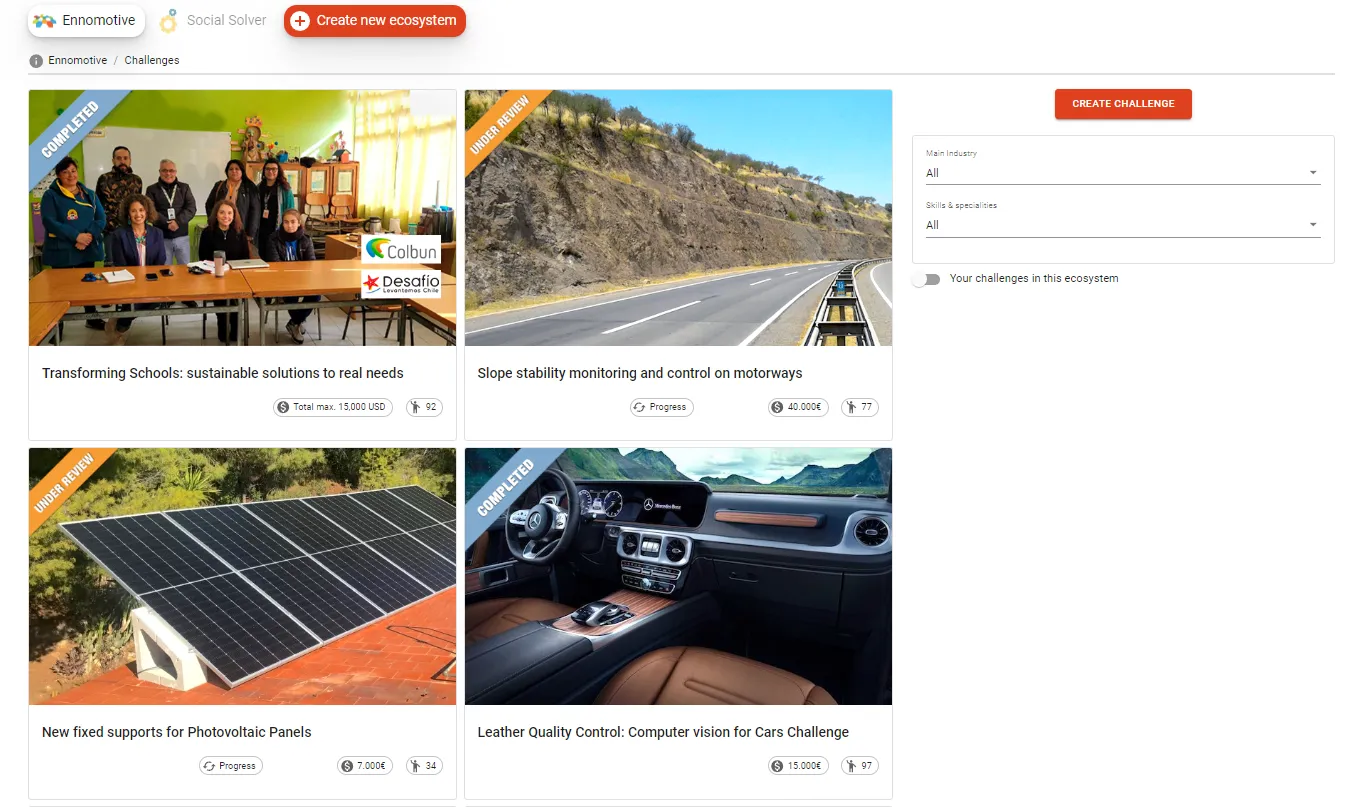Background
CIECH, a leading European soda manufacturing company, is seeking to reduce its environmental impact by repurposing the waste materials in an effort to contribute to the circular economy.
Circular economy considers waste materials as the source of new opportunities to create solutions, or even manufacturing products, that could be commercialized and have a valuable impact in other fields.
The challenge
Solvay soda production, despite its high efficiency and effectiveness, is burdened with the phenomenon of large amounts of waste and by-products from the process, which account for approximately 40 % of the soda ash production volume.
The “post-soda lime” is obtained by separating the solid phase present in the distillation fluid. It mainly contains calcium carbonate, calcium sulfate, magnesium hydroxide, silica, lime scale solids and unreacted calcium hydroxide, calcium and sodium chloride.
In Polish facilities, distillation sludges, after washing (in order to remove chlorides), are directed to compaction on filter presses; the product is applied in agriculture as a calcium fertilizer containing 50% water and up to 3% of chlorides. The technology is presented in the attached schematic diagram.
The agricultural use of “soda lime” is related to its seasonal sales and is limited to Poland only. The low added value really limits the transportation feasibility to a radius of 100 km anyway.
What CIECH is looking for
The objective of this challenge is to identify new opportunities for developing new applications for the so-called “post-soda lime” (marketable solutions or products, other than agriculture) or adding value by improving its properties:
- New application areas, including required chemical and physical properties.
- Process/technology description of the conversion process of the existing material into the new product.
- Possible/assumed economic effects.
- Existing applications from other fields can be submitted as proposed solutions.
- Applications out of scope: Agriculture
Evaluation criteria
All proposed solutions will be evaluated by the following criteria:
• Technical feasibility.
• The highest volume of material used (partial volumes will be also evaluated)
• The best Business Case (the lowest operational cost and the highest value)
• The lowest hazard of the product generated or solution provided.
This is a 2-round tournament with the following submissions:
First round
A PDF document including:
• Brief description of the proposed solution, including composition, granulometry, impact on volume and level of hazard of the solution / product.
• Feasibility evidence of the solution.
• High level business case (including investments, costs, and revenues, if applicable)
Second round
• Specification of the solution, either an existing one or a new product/process.
• Development plan and feasibility evidence for the product / process.
• Detailed business case.
Timeline
This is a 2 round tournament with the following timeline:
1st round – 6 weeks + 3 weeks for evaluation
2nd round – 4 weeks + 2 weeks for evaluation



